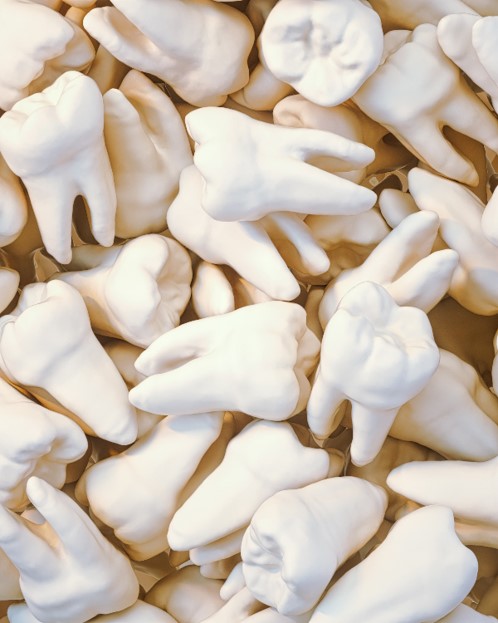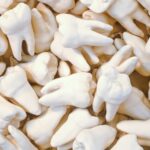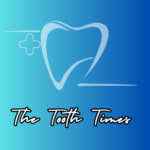Developmental anomalies of oral cavity : hard tissue Structures
Introduction
- Malformations or defects resulting from disturbance of growth and development are known as developmental anomalies
- Congenital anomalies : The defects, which are present at birth or before birth during the intrauterine life
- Hereditary developmental anomalies : When certain defects are inherited by the offspring from either of the parents
- Acquired anomalies : They develop during intrauterine life due to some pathological environmental conditions. They are not transmitted through genes.
- Hamartomatous anomalies : A hamartoma can be defined as an excessive, focal overgrowth of mature, normal cells and tissues, which are native to that particular anatomic location.
- Idiopathic anomalies : Developmental abnormalities of unknown cause are called idiopathic anomalies.
- Syndrome : It is a term used to describe a group of related symptoms that commonly occur together and may have a specific underlying cause.
- Developmental Anomalies
Causes of developmental disorders incudes:
- Genetic factors
- Prenatal factors
- Environmental factors
- Neurological factors
Developmental disturbance in size of teeth
1.MICRODONTIA
- It refers to teeth which are smaller than normal size.
- There are 3 types of Microdontia
- 1. True- generalized Microdontia :
- All the teeth are smaller than normal
- 2. Relative-generalized Microdontia :
- The teeth may be of normal size/smaller but due to large jaw, they give illusion of small tooth.
- 3. Microdontia involving single teeth : Localized microdontia seen.
- Prevalence / Incidence rate:
- 1.5 to 2 %
- Clinical significance :
- In microdontia, teeth are often spaced which may be disturbing cosmetically.
- There may be difficulty in speech and taking food.
- Management:
- Crown and Bridge placement for aesthetic rehabilitation.
2.MACRODONTIA
- It refers to teeth which are larger than normal.
- There are 3 types of Macrodontia:
- 1. True Generalized Macrodontia :
- All teeth are larger than normal and are associated with pituitary dwarfism
- 2. Relative Generalized Macrodontia : Seen in cases of micrognathia jaw, teeth may be Larger or normal in size.
- 3. Macrodontia of single tooth Localized macrodontia may be seen
- Clinical Features: Malocclusion may occur
- Impactions may occur
- Management: Orthodontic treatment. Extraction of impacted teeth.
- Prevalence / Incidence rate:
- 0.03 to 1.9 %
Developmental disturbance in shape of teeth
1. Gemination
- Geminated teeth are anomalies which arise from an attempt at division of single tooth germ by an invagination, with resultant incomplete formation of two teeth.
- CLINICAL FEATURES
- Seen in both primary and permanent dentitions.
- Has higher frequency in the anterior and maxillary regions.
- Incisors and canines are most commonly affected.
- Teeth demonstrate a pronounced labial or lingual groove
- CLINCAL SIGNIFICANCE
- Gemination can result in crowding and delayed or ectopic eruption of the underlying permanent teeth and hence have to be extracted in certain cases.
- The labial or lingual groove are prone to develop caries and hence in such cases fissure sealant should be used
2. Fusion
- Fused teeth arise through union of two normally separated tooth germ.
- CLINICAL FEATURES
- Fusion may be complete or incomplete.
- The tooth may have separate or fused root canals.
- Teeth demonstrate a pronounced labial or lingual groove
- Affects both primary and permanent teeth.
- Most frequently occurs in the mandible.
- CLINICAL SIGNIFICANCE
- Fusion Results in spacing
- The labial and lingual grooves are prone to develop caries
- Prevalence / Incidence rate:
- 0.1 to 1.5%
3. Concrescence
- Teeth are united by the cementum only.
- It arises as a result of traumatic injury or crowding of teeth with resorption of the interdental bone so that the two teeth are in approximate contact and become fused by deposition of cementum.
- CLINICAL FEATURES
- Most commonly seen in the posterior and maxillary regions.
- It can occur before or after the teeth have erupted.
- CLINICAL SIGNIFICANCE
- No therapy is usually required unless the union interferes with eruption, then surgical removal may be warranted.
4. Dilaceration
- Dilaceration refers to an angulation or a sharp bent in the root or crown of a tooth.
- It arises after an injury that displaces the calcified portion of the tooth germ and the reminder of the tooth is formed at an abnormal angle.
- CLINICAL FEATURES
- Most commonly affected teeth are the mandibular third molars followed by the maxillary second premolars and mandibular second molars.
- Failure of eruption is often seen .
- CLINICAL SIGNIFICANCE
- Altered deciduous teeth often demonstrate inappropriate resorption and results in delayed eruption of permanent teeth.
- Extraction is indicated in such conditions.
- Teeth with abnormal eruption may be exposed and orthodontically moved into proper position.
5. Talon cusp
- Talon Cusp is an anomalous structure resembling an eagles talon
- CLINICAL FEATURES
- Talon cusp projects lingually from the cingulum areas of maxillary or mandibular permanent incisor.
- A deep developmental groove is present in lingual tooth surface.
- Composed of normal enamel, dentin and contains a horn of pulp tissue.
- Most commonly seen in association with Rubinstein-Taybi syndrome.
- CLINICAL SIGNIFICANCE
- Talon cusp on maxillary teeth interfere with occlusion and should be removed
- The developmental groove may be prone to caries.
- Removal with out loss of vitality may be accomplish through periodic grinding of the cusp resulting in tertiary dentine deposition and pulpal recession
6. Dens Invaginatus
- Dens Invaginatus is a deep surface invagination of the crown or root that is lined by enamel. •
- TYPES
- Coronal
- Radicular
- CLINICAL FEATURES
- Most commonly affected teeth are permanent lateral incisors.
- Depth of invagination varies from a slight enlargement of the cingulum pit to a deep infoldings that extends to the apex.
- Invagination may be large and resemble a tooth with in a tooth and hence the term ‘Dens In Dente
- Three types of coronal invagination is seen:
- Type I – Invagination is confined to the crown
- Type II – Invagination extents below the cementoenamel junction and ends In a blind sac that may or may not communicate with the adjacent pulp.
- Type III – Invagination extents through the root and perforates in the apical or lateral radicular area without communication with the pulp.
- Radicular Dens invaginatus arises secondary to proliferation of hertwig’s root sheath with the formation of strip of enamel that extends along the surface of the root.
- CLINICAL SIGNIFICANCE
- In type I Invaginations the opening of the invagination should be restored after eruption to prevent caries.
- In larger invagination the content of the lumen and any carious dentin must be removed and calcium hydroxide base must be placed to treat micro communications with the pulp.
- In type III endodontic therapy is required
7. Dens Evaginatus
- Dens Evaginatus appears clinically as an accessory cusp or globule of enamel on the occlusal surface between buccal and lingual cusp of pre molars.
- Occurs as a result of proliferation and evagination of an area of inner enamel epithelium and odontogenic mesenchyme into the enamel organ during tooth development.
- CLINICAL SIGNIFICANCE
- May interfere with occlusion and should be removed
- Removal with out loss of vitality may be accomplish through periodic grinding of the cusp
- Prevalence / Incidence rate: 1 to 4%
8. Taurodontism
- It is the enlargement of the body and pulp chamber of a multirootedd teeth with apical displacement of the pulpal floor.
- RADIOGRAPHIC FEATURES
- Affected teeth tend to be rectangular.
- Increase in apico-occlusal height
- Bifurcation lies close to the apex
- No cervical constriction
- The degree of taurodontism has been classified into:
- Mild (hypotaurodontism)
- Moderate(mesotaurodontism)
- Severe(hypertaurodontism)
- No specific therapy is required
9. Enamel Pearls
- They are ectopic collections of enamel.
- These are hemispherical structures consisting of enamel or may contain dentin and pulp.
- CLINICAL FEATURES
- Most frequently found on the roots of maxillary molar.
- RADIOGRAPHIC FEATURES
- They appear as well defined, radiopaque nodules along the root surface.
- Mature internal enamel pearls appear as areas of radio density extending from the dentino-enamel junction into the coronal dentin
- CLINICAL SIGNIFICANCE
- Enamel pearls are areas of weak periodontal attachment.
- Hence meticulous oral hygiene should be maintain
Check out other post related to dentistry in The Tooth Times
Do follow Civil Engineer Academy for civil engineering related posts
Follow Trending Curiosity for trending posts
For travel services do check out Bangalore Tour and Travel








